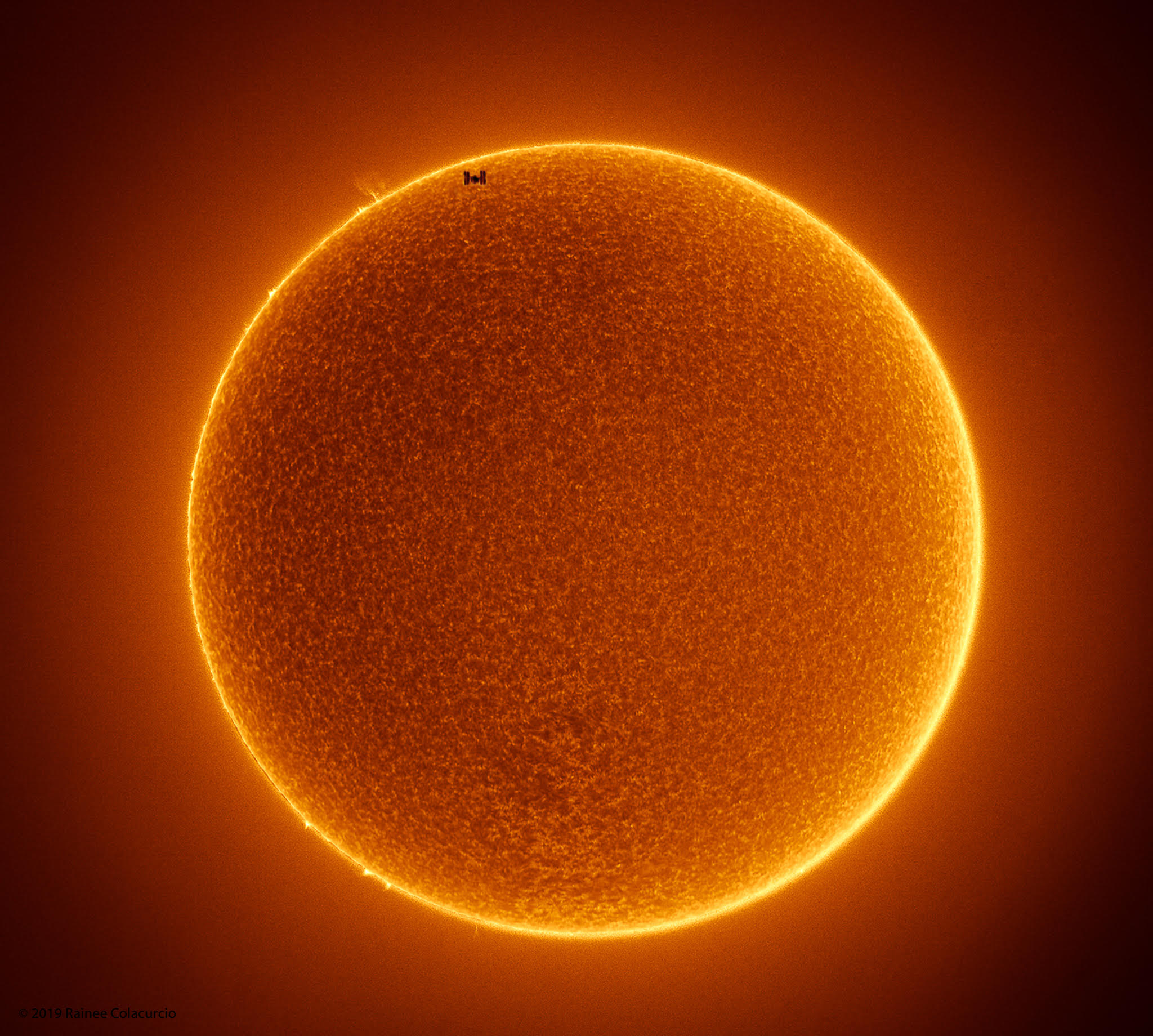2019 July 15
The Space Station Crosses a Spotless Sun
Image Credit & Copyright: Rainee Colacurcio
Explanation: That’s no sunspot. It’s the International Space Station (ISS) caught passing in front of the Sun. Sunspots, individually, have a dark central umbra, a lighter surrounding penumbra, and no solar panels. By contrast, the ISS is a complex and multi-spired mechanism, one of the largest and most sophisticated machines ever created by humanity. Also, sunspots occur on the Sun, whereas the ISS orbits the Earth. Transiting the Sun is not very unusual for the ISS, which orbits the Earth about every 90 minutes, but getting one’s timing and equipment just right for a great image is rare. Strangely, besides that fake spot, in this recent two-image composite, the Sun lacked any real sunspots. The featured picture combines two images — one capturing the space station transiting the Sun — and another taken consecutively capturing details of the Sun’s surface. Sunspots have been rare on the Sun since the dawn of the current Solar Minimum, a period of low solar activity. For reasons not yet fully understood, the number of sunspots occurring during both the previous and current solar minima have been unusually low.
空间站凌越没有黑子的太阳
影像来源与版权: Rainee Colacurcio
说明:那不是太阳黑子。它是在飞越太阳前方时被捕捉到的国际空间站(ISS)。太阳黑子有一个黑暗的中央本影和周围较明亮的半影,但没有太阳能电池板。相比之下,ISS是一台复杂的多螺旋机械装置,是人类有史以来创造的最庞大、最复杂的机器之一。此外,太阳黑子出现在太阳上,而ISS则环绕地球运行。对于每90分钟绕行地球一周的ISS来说,凌日现象并不罕见,但是要想拍摄一幅绝佳的影像,选择合适的时间和设备是非常重要的。奇怪的是,在这幅由最近拍摄的两张照片结合而成的影像中,除了那个假的太阳黑子之外,太阳表面没有真正的太阳黑子。这幅特征影像由两张照片合成,一张照片呈现了凌日的空间站,另一张照片呈现了连续捕捉到太阳表面的细节。太阳黑子在当前太阳活动极小期(太阳活动平静期)出现之后就已经很少见了。由于尚未完全了解的原因,在之前和现在太阳极小期出现的太阳黑子数量都非常少。







